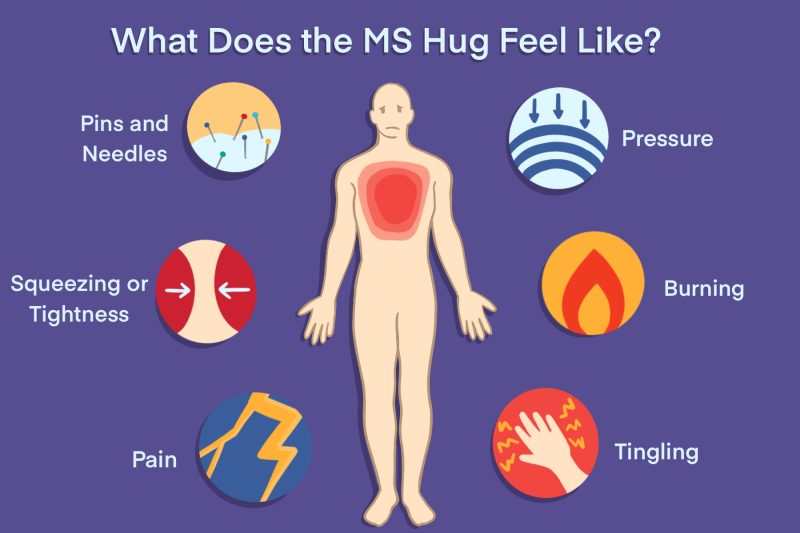
FAQs about the MS hug
The multiple sclerosis (MS) hug is characterized by feelings of squeezing or tightness around the rib cage or across the chest. In more severe cases, the symptom may cause extreme chest tightness and pain that makes it harder to breathe. Medications that ease muscle spasms and nerve pain, in addition to relaxation techniques, rest, and other complementary approaches, may help manage this symptom in such circumstances.
As with other symptoms of multiple sclerosis (MS), the exact frequency and severity of the MS hug can vary considerably from person to person. Some people may experience the sensation only occasionally and for a few seconds, while for others it may be frequent and long lasting. Some people find factors such as temperature changes or stress can trigger their MS hug, so avoiding those triggers may help keep this symptom at bay for longer periods.
The multiple sclerosis (MS) hug may be among the first symptoms to develop in someone with MS, but it also may initially occur years after disease onset. It’s also possible for some people with MS to never experience the MS hug.
The multiple sclerosis (MS) hug may occur as part of an MS relapse. However, some people with relapsing forms of MS may experience it even when they are not having a relapse; this symptom also may occur during the progressive stages of the disease.
The multiple sclerosis (MS) hug affects every person differently. Some report this symptom worsens at night, while others report it is less intense during this time of day. When the sensation causes problems with sleep, adjusting sleep position — for example, being propped up on pillows — may be helpful for managing the MS hug at bedtime.
 Fact-checked by
Fact-checked by 





